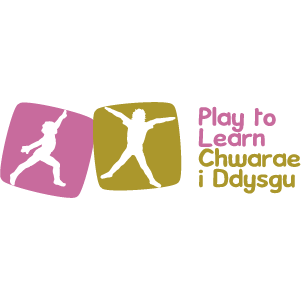
Let’s ‘Play to Learn’
- Read parts of the story / play parts of the story on the CD-ROM
- Explore moods and feelings using simple movements, e.g. How do they feel arriving at the beach compared to leaving the beach?
- Explore using the basic dance actions of travel, turn, jump, gesture and stillness to create a short phrase/motif/sequence, e.g. a ‘rubbing in sun cream’ phrase or a ‘building a sandcastle’ phrase or a ‘twisting and swooping’ phrase or a ‘hopping from rock to rock’ phrase
- Explore changes in direction and level to make more interesting phrases, e.g. taking a ‘jumping waves’ phrase onto the floor to become a ‘playing/splashing in the waves’ phrase

Safety & Organisation
Ensure:
- the surface is clean and free from obstructions
- children work in their ‘bubbles’
Opportunities to
- develop movement responses to different stimuli
- explore and express moods, feelings and ideas through simple movements that can be repeated
- move in different ways, creating varied body shapes and changing direction and level
Questions
- How can you make your actions bigger and more exaggerated?
- What happens to your movements as the wind gets stronger?
- How could you show the kite breaking free from the string?
- What could you jump over as imaginary waves?
- How would you feel as you were opening the birthday present?
Can you see the child?
- Developing movement responses to different stimuli
- Exploring and expressing moods, feelings and ideas through simple movements that can be repeated
- Moving in different ways, creating varied body shapes and changing direction and level
-
Most of the time
Encourage the child to:
- use more than one direction
- discuss body shapes and when and how they might be used
- perform their actions for longer
- imagine what happens in between some of the events in the story, and create actions to express these
- discuss the quality of their movements, e.g. how would a ‘darting’ phrase differ to a ‘dashing and whirling’ phrase, etc.?
-
Sometimes
Encourage the child to:
- focus on their favourite word
- practise ‘as they develop locomotor skills’ using the Technical Skills Cards. How could you adapt these actions so they link to the story?
- watch other children to gain ideas. Ask them what do they like? How could they do this differently?
- discuss some of the moods and feelings in the book. How do they feel when they are excited? How did they know the children were excited from looking at the pictures?


